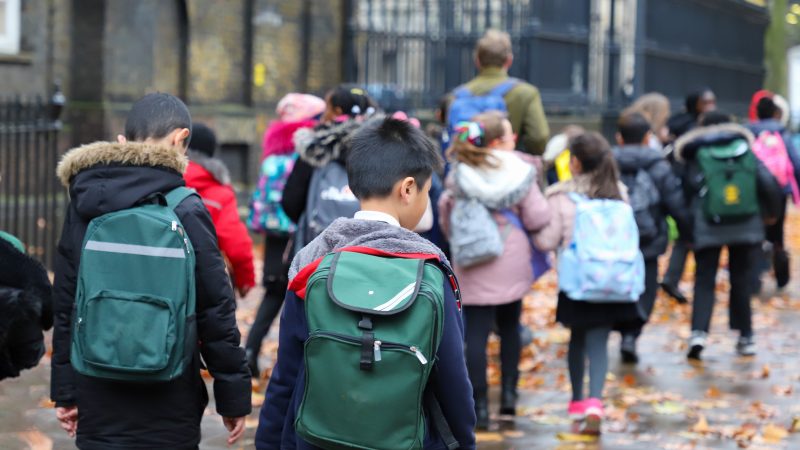
Next month marks 60 years since Child Poverty Action Group first wrote to a Prime Minister. The PM in question was Harold Wilson, and in it our founding supporters called for “a radical improvement in living standards for families with children”.
That very first letter identified that children in all types of families can find themselves living in poverty for all sorts of reasons, with the majority in working families with several children. The authors recognised that the government was most likely already convinced of the need to support family life and children, but warned that further action to reduce poverty was essential, to improve the health and welfare of children, as well as to limit the effects poverty has on society as a whole.
The more things change, the more they stay the same.
All the evidence now shows growing up in poverty can lead to poorer educational outcomes, worse physical and mental health, shorter life expectancy and higher infant mortality. It damages people and their communities, cripples public services and hinders growth.
READ MORE: ‘To fix Britain’s broken property taxes – Labour must back a Land Value Tax’
At the centre of the current row sit 4.5 million children, all equally deserving of a good childhood and all equally powerless to do anything about it. The majority are still in working, tax-paying families, and still have a few brothers or sisters.
As for the government, there’s a manifesto commitment to reduce child poverty within this parliament, backed up by the PM’s description of tackling child poverty as the “moral mission” of this government. It can only be the case that as in 1965, it is already convinced of the need to help children and families. Over fifteen months since the government established its child poverty task force and with the budget on the horizon, the path to delivering on this commitment is clear.
An ambitious strategy that lifts children out of poverty will need to use many levers, but the first thing it must do is abolish the two-child limit in full.
The two-child limit is the biggest driver of child poverty, pulling 109 kids into poverty every day, and scrapping it would be the most cost-effective way to reduce child poverty from its record high. There’s no more straightforward, value- for-money way to meet the government’s ambition. Half-measures have been mooted in the press, but anything less than fully scrapping the policy would mean throwing away the opportunity to take the single most efficient child poverty-reduction step.
Subscribe here to our daily newsletter roundup of Labour news, analysis and comment– and follow us on Bluesky, WhatsApp, X and Facebook.
But it’s also a question of purpose. Research shows that while a first child comes with slightly higher costs than its siblings, when it comes to subsequent children, there are no notable economies of scale. There might be the odd saving from a hand-me-down coat or similar, but they’re marginal compared to the cost of extra childcare; the challenges of food shopping on a tight budget; and the higher rents that are associated with having kids. A system that is there to support children to reach their potential needs to recognise these costs properly.
And it’s a matter of values. All children deserve a childhood free from poverty and a future worth living, no matter how many brothers or sisters they have. That letter from 1965 asked the then Labour government to give more direct financial support in respect of children in the poorest families. Any compromise on the two-child limit would do the opposite, and risk giving less to children in deeper poverty, who need support the most. That can’t be what a child poverty strategy is supposed to do.
Really, this means the government must properly abolish the policy. No three or four or five-child limit, no benefit cap, no compromise that undermines either the effectiveness of abolishing the limit or this government’s commitment to give all children the best start in life.
Abolishing the two-child limit probably doesn’t count as the radical action our CPAG founders were calling for. Against the backdrop of almost £50 billion less being spent now than in 2010 on social security for children and families, it’s the bare minimum this forthcoming strategy must do.
Share your thoughts. Contribute on this story or tell your own by writing to our Editor. The best letters every week will be published on the site. Find out how to get your letter published.
But it would be a fresh, cost-effective, and morally unambiguous start to making the days better and the future brighter for kids up and down the country. Perhaps not all commentators will be happy. But it’s hard to see how anyone who objects to this approach will be happy with any of the measures required to bring down the shamefully high number of children living in poverty. And that’s what this government has set out to do, in its manifesto, with the public’s backing. So it should do it, and be proud of it.
-
- SHARE: If you have anything to share that we should be looking into or publishing about this story – or any other topic involving Labour– contact us (strictly anonymously if you wish) at [email protected].
- SUBSCRIBE: Sign up to LabourList’s morning email here for the best briefing on everything Labour, every weekday morning.
- DONATE: If you value our work, please chip in a few pounds a week and become one of our supporters, helping sustain and expand our coverage.
- PARTNER: If you or your organisation might be interested in partnering with us on sponsored events or projects, email [email protected].
- ADVERTISE: If your organisation would like to advertise or run sponsored pieces on LabourList‘s daily newsletter or website, contact our exclusive ad partners Total Politics at [email protected].




More from LabourList
‘Britain’s G20 Presidency is Labour’s chance to lead a global reset’
Is Andy Burnham’s star dimming amid repeated hints at leadership ambition?
Burnham’s popularity with members drops, but still over 50% approve – poll